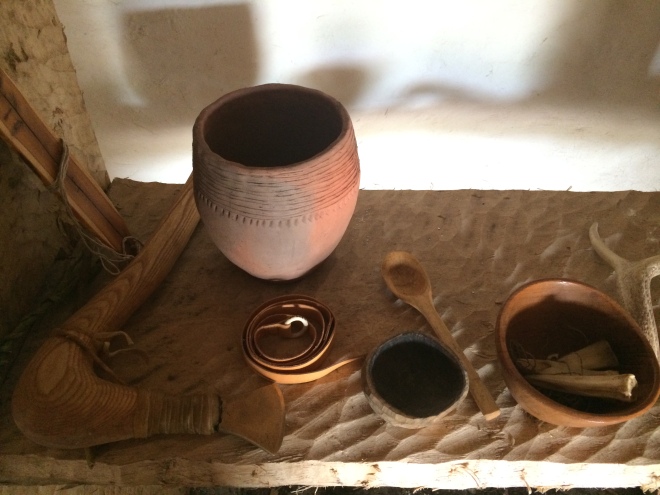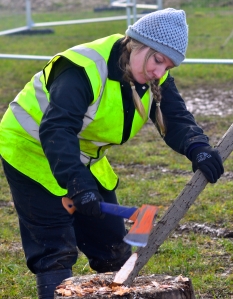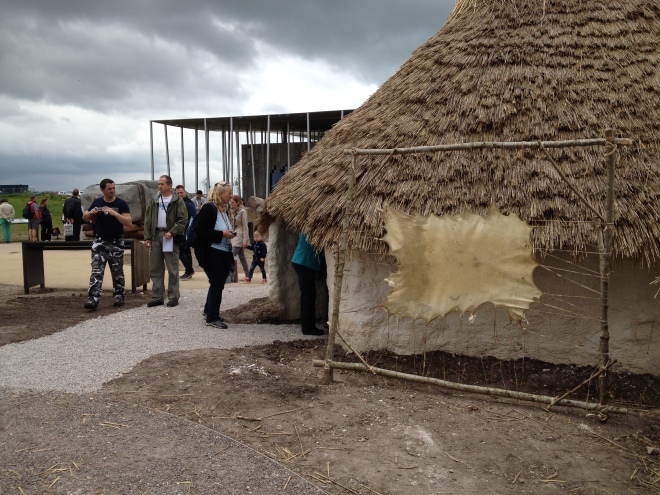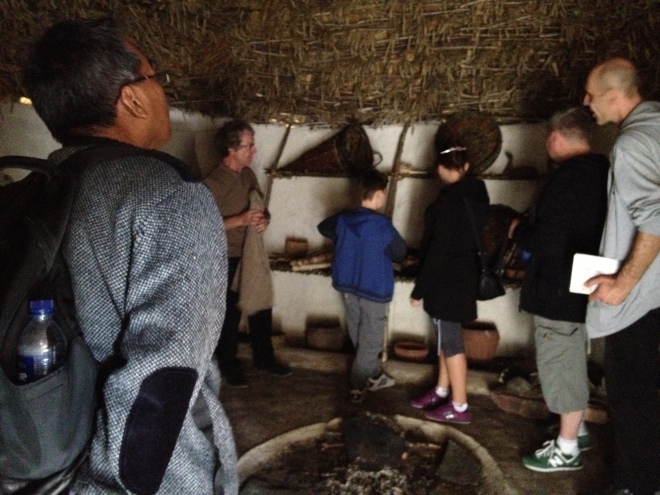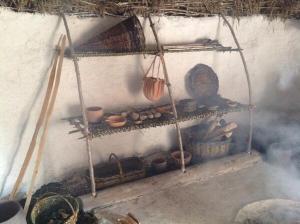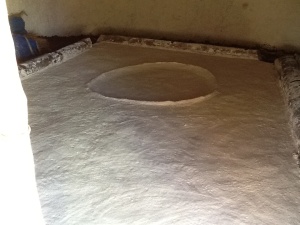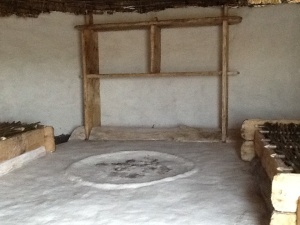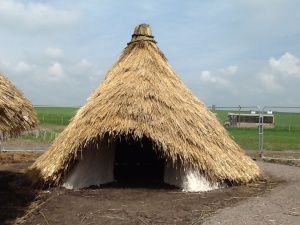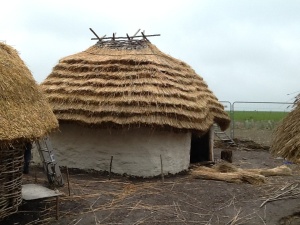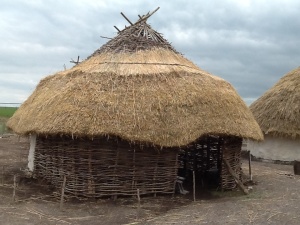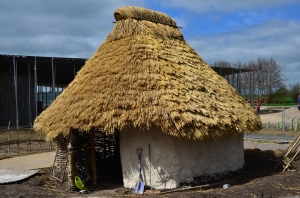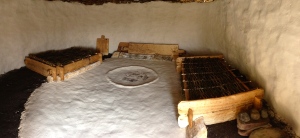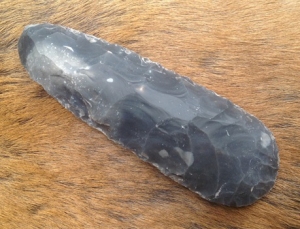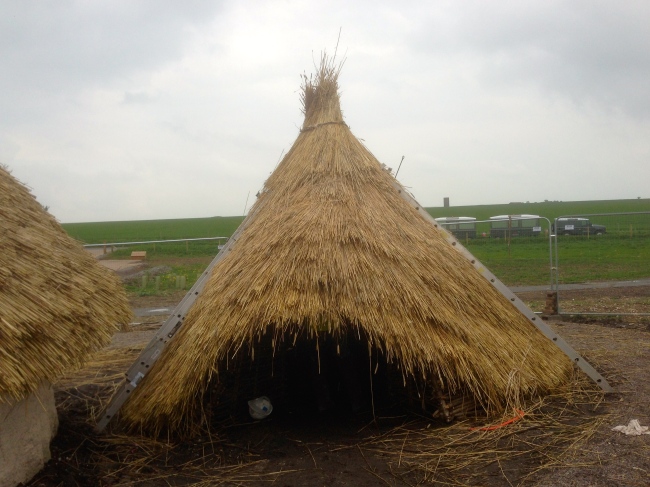Name: Flo Brookes
How long have you been volunteering at stonehenge? I think I started in March which makes it 6 months
What do you do when you’re not volunteering at Stonehenge? Being recently retired, I’m enjoying not being organized. I garden a lot, catch up with friends, and spend time with my daughter and granddaughter.
What was the Neolithic Life training session about? The Overview session was about how the houses came to be built as a part of the new gallery, and where the information for their construction came from. We also looked at all the wonderful replica items that will help to bring the Neolithic Houses to life. It was great to have a chance to discuss the way in which we can help the visitors experience the houses in the best possible way.
What was the most interesting thing you learnt? Information about the bone needles and other artifacts. I was doing it as a refresher and it was good to have reminders about a lot of the other items.
What was the most fun thing about the session? Being a part of such a great project.
What was the most surprising thing about the session or the expert? I was very pleased to hear that there will be a diary so we can record the lovely things that the visitors say.
What aspect of what you learnt today are you most looking forward to talking to visitors about? Responding to their questions, based on what we’ve learned
.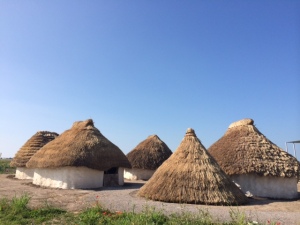
What attracts you about volunteering in the Neolithic Houses? I have always been fascinated by what it was like to live in earlier times, especially much simpler ones, where it is easier to see how things worked or were made. I like the idea of bringing the houses to life with a fire, baking flatbread and making cords and baskets etc.
What would you say to others who are thinking about volunteering? It’s absolutely great to share these fabulous houses with people who’ve come from all over the world to see Stonehenge. The visitors are pleased to know more about the houses and some spend a lot of time discussing them with us. We can make a big difference to the way the visitors enjoy their time.
 We are always looking for great people to join our team of fantastic volunteers at Stonehenge. If you are interested and would like to find out more about bringing the past to life for our visitors, please visit the English Heritage website
We are always looking for great people to join our team of fantastic volunteers at Stonehenge. If you are interested and would like to find out more about bringing the past to life for our visitors, please visit the English Heritage website

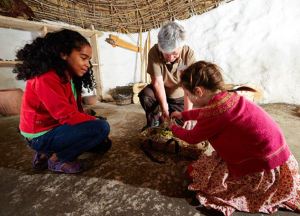
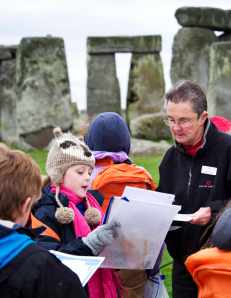
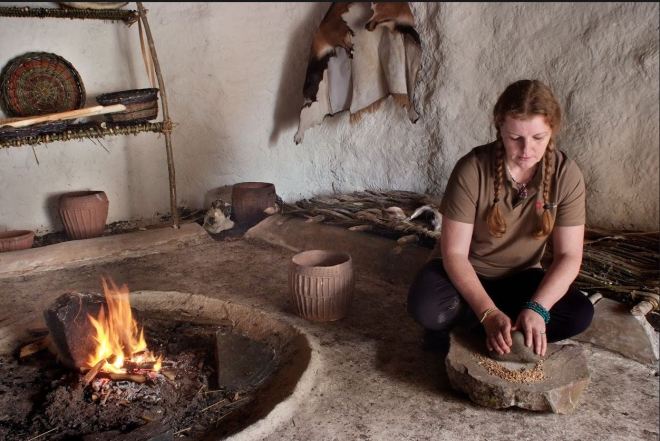
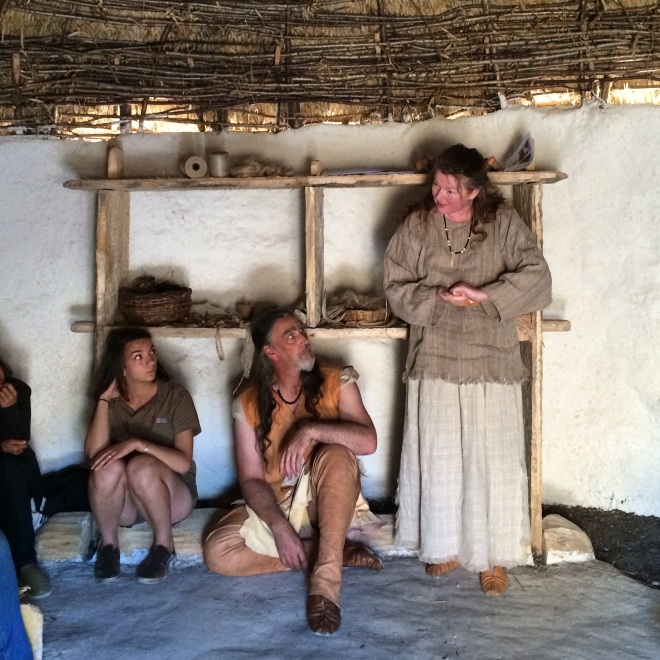


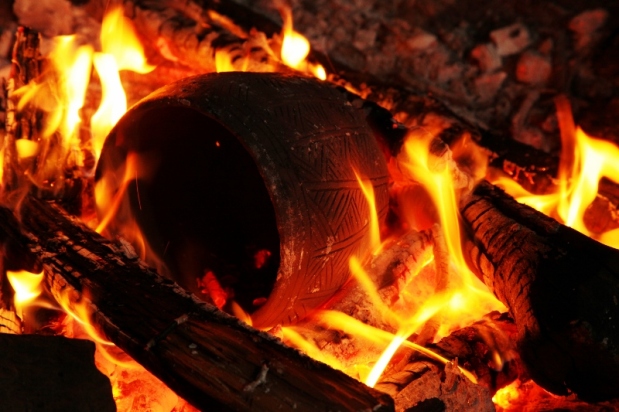




 Once the pot has been finished and decorated I must consider how I will fire it. Received wisdom is that all prehistoric pottery in Britain was fired in an open hearth rather than a kiln, although the finest beakers show signs that the hearth allowed for considerable control of the fuel and air supply, like a rudimentary kiln. This was also the case for the collared urn, although the carinated bowl was fired in close contact with the fuel in an open fire. Again in each case I try to emulate the original conditions as closely as possible. The resulting replicas do not look as they do after four or five thousand years in the ground, but rather as they did on the day they were made.
Once the pot has been finished and decorated I must consider how I will fire it. Received wisdom is that all prehistoric pottery in Britain was fired in an open hearth rather than a kiln, although the finest beakers show signs that the hearth allowed for considerable control of the fuel and air supply, like a rudimentary kiln. This was also the case for the collared urn, although the carinated bowl was fired in close contact with the fuel in an open fire. Again in each case I try to emulate the original conditions as closely as possible. The resulting replicas do not look as they do after four or five thousand years in the ground, but rather as they did on the day they were made. 
